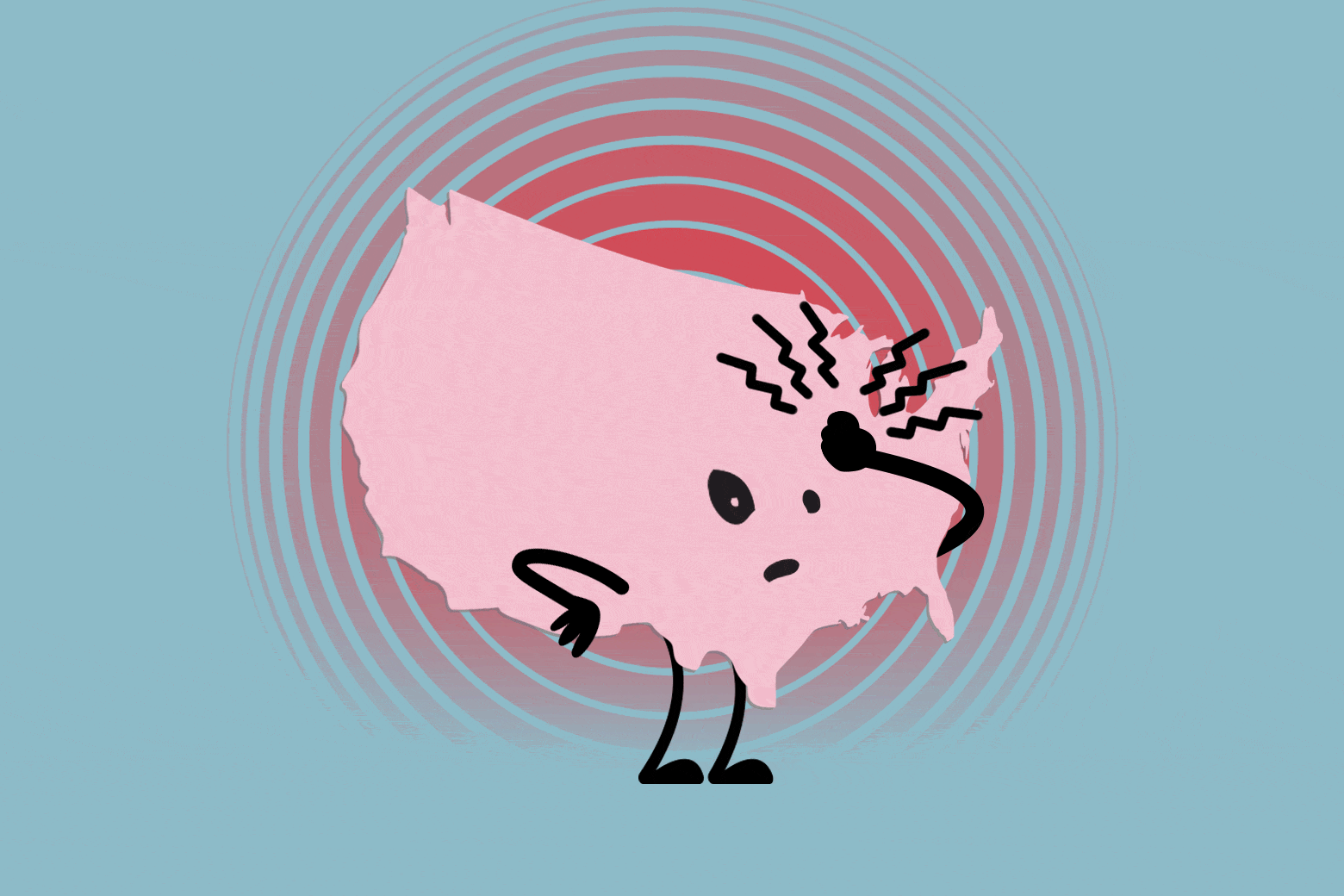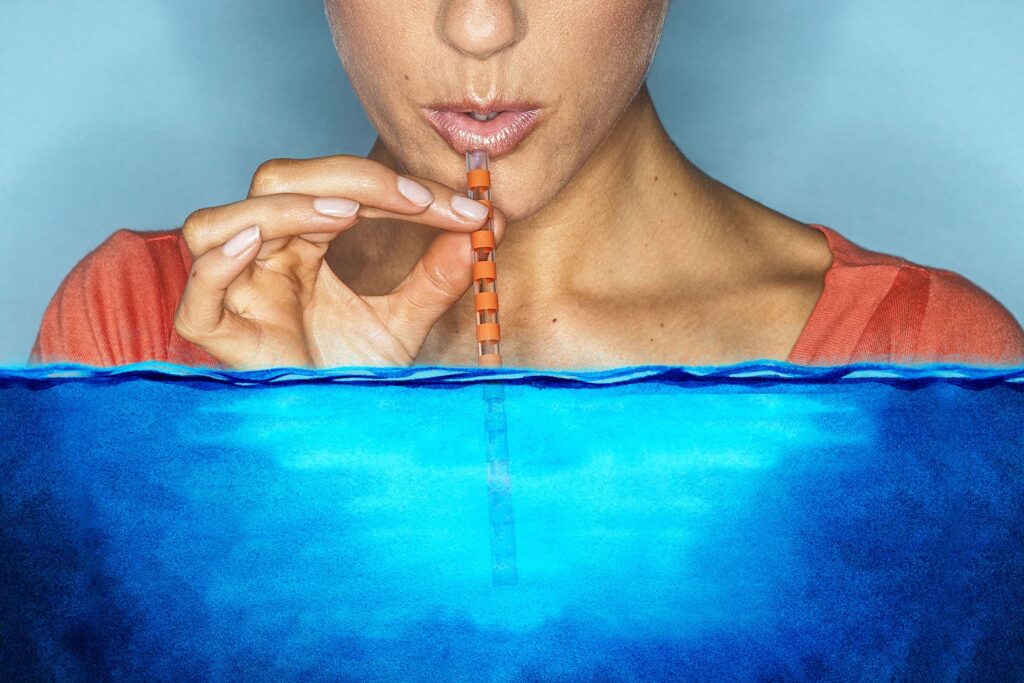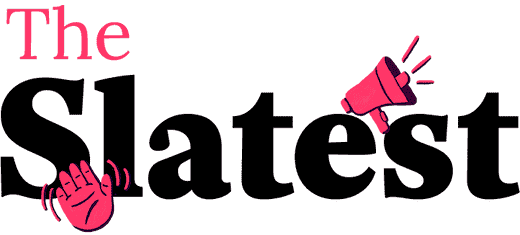Sign up for the Slatest to get the most insightful analysis, criticism, and advice out there, delivered to your inbox daily.
Two years ago, I had a conversation with my doctor that remains one of the more unnerving interactions I have ever had. After reviewing the results of a routine blood test, she wanted to know if I had recently experienced any of the following: loss of consciousness, dizziness, confusion, or a seizure. No, no, no, and no. Then she wanted to know: Did I have an altered mental state? At that point, debatable.
It turned out I had too little sodium in my blood. As the doctor and I talked, the culprit became clear: My healthy lifestyle was to blame.
I run or go to the gym every day. I try to eat well. I drink plenty of water, especially when I’m working out.
Bombarded by public health warnings about the dangers of not drinking enough, I was terrified of dehydration. Add in cultural myths like the 8×8 rule—eight glasses of 8 ounces of water a day—and lifestyle messaging that drinking more water will help me have better skin, hair, sleep, digestion, you name it, and I was knocking back at least 3 liters of water each day. That was on top of my morning coffees, a soda here and there, food (water filled!), and any other drinks I happened to have. Yes, those things count toward water intake.
Altogether, I was getting too much water. Way, way too much.
And now I was in danger. In the body along with water is sodium—an essential electrolyte that helps your body maintain its fluid balance, preserves nerve and muscle function, and keeps your heart working, among other things. A healthy sodium level is anywhere between 135 and 145 millimoles per liter of blood. Sodium is naturally found in food, and people who eat a Western diet tend to add quite a bit extra to their meals in the form of table salt too.
But the body’s delicate balance between water and salt can be rapidly thrown out of whack, especially during exercise. At one end of the spectrum is dehydration. At the other is overhydration and hyponatremia, a potentially life-threatening condition.
Hyponatremia occurs when a person’s blood sodium levels drop below 135 millimoles per liter of blood. If someone drinks to excess, they effectively dilute their blood sodium levels. At the same time, water starts to leak into their body’s tissues, causing them to swell, explains Tamara Hew-Butler, a Texas-based podiatrist who specializes in treating and studying runners. In severe cases, the brain can start to swell, leading to some of hyponatremia’s core symptoms: confusion, dizziness, the inability to speak properly, and headaches.
I was training for a half-marathon at the time that I was diagnosed with hyponatremia, and I was easily drinking 4 liters of water or sports drinks a day. My doctor was blunt: I was drinking too much and not replacing the salt I had lost in sweat. And while I didn’t feel as if anything was wrong with me, if I didn’t change, I would be putting myself at risk of far worse than a headache.
“When the sodium level starts to creep downward, people are more likely to experience more severe symptoms,” said Paul Charlton, an emergency medicine physician and an affiliate faculty member at the University of Colorado. A person can lose consciousness, have seizures, collapse, vomit, and fall into a coma. In extreme cases, the brain swells so much that the brain stem herniates—a rupture that is fatal. All of this can happen in the space of just a few hours. Multiple marathon runners and other athletes have died of overhydration in recent years.
While some people can be at risk of low sodium because they take certain medications or have an underlying health problem, exercise-associated hyponatremia strikes otherwise healthy people. A lot of what we know about the condition comes from studying ultrarunners and other endurance athletes, as well as the military. There’s some evidence to suggest that women may be more at risk than men, and while it’s unclear why, hyponatremia tends to be more severe in smaller individuals purely because it’s easier for them to overconsume fluids relative to their body mass, said Brendon McDermott, a physiologist at the University of Arkansas and a seasoned marathoner.
It is also unclear how many people may experience hyponatremia, in part because not everyone shows symptoms, Charlton said. Interestingly, some studies suggest that certain people may just be low in sodium all the time, while others suggest that some people might not be able to access their body’s sodium stores efficiently, tending them toward hyponatremia.
What is abundantly clear, however, is that when people stop drinking to thirst and instead compel themselves to take in fluids while exercising, their physiology can rapidly spiral out of control. (Theoretically, you could also overhydrate while sitting in your car and throwing back Stanley cups full of water, but it would be exceedingly difficult.)
During exercise, the descent into hyponatremia can be exacerbated in particular ways, Hew-Butler said, not least by sweating out salts. But there is a hormonal aspect too: Vasopressin, an antidiuretic hormone, ramps up during exercise, and especially when it’s hot.
“Your body’s like, ‘Oh my God, I’m losing water. I’m not going to pee it out,’ ” Hew-Butler said. By suppressing the call of nature while you’re losing fluid through sweat, the body is trying to maintain that delicate water-to-salt ratio and keep everything working the way it should, she explained.
In other words, the body starts trying to retain fluid. Importantly, subbing out water for sports drinks is not going to cut it: “It functionally makes very little difference in terms of people’s outcome,” Charlton said. He and other experts I spoke to all agreed that most sports drinks should be treated as water. (For context, most commercial sports drinks contain around 10 percent of a person’s recommended daily sodium—a 20-ounce bottle of Gatorade Thirst Quencher, for example, has 270 milligrams, or about 11 percent, while a 12-ounce bottle of Powerade contains 240 milligrams of sodium, which is 10 percent.) So if you start chugging sports drinks or water midway through a run, then you can quickly swell your cells.
“That’s why sometimes people get in more trouble during exercise,” Hew-Butler said. “They preload and they keep loading.”
Confoundingly, hyponatremia’s early clinical presentation—dizziness, headache, confusion—appears almost exactly the same as that of dehydration or heat exhaustion. Hyponatremia can be confirmed only by a blood test, and while medical tents at large sports events and emergency rooms have the kit to be able to quickly ascertain people’s sodium levels, your average Jane—me!—might not realize the true nature of their problem. And that can make things worse, fast.
In an increasing number of cases, Charlton said, people who don’t fit the typical mold for acute or exercise-associated hyponatremia are being diagnosed with the condition.
If someone is out hiking or playing in a high school football game, or even just doing some gardening in hot weather, they might be tempted to drink a lot of water even if they aren’t thirsty in a bid to avoid dehydration or merely to cool down, he said, unwittingly endangering themself in the process.
Charlton recalled the case of a Japanese woman who was performing on an outdoor stage on a hot day. She collapsed and had a five-minute seizure after her act. It turned out that, worried about heat injury and following public health guidance to drink lots of water, she had drunk about 4 liters of liquid during her show. When staffers took her blood at the hospital, they learned that her sodium level was 117.
“It was not clear at the beginning (that she had hyponatremia) because she did not fit their profile,” Charlton said. “She wasn’t an ultrarunner. She wasn’t engaged in regular high-stress activities.”
She was simply trying to take care of herself. And doing that before you are thirsty can lead to trouble.
“You hear a lot about, like, thirst is inadequate, and if you get thirsty, it’s too late,” Hew-Butler said. “But thirst is a biological mechanism that’s been conserved for 700 million years,” she added. “It’s not defective when you exercise.”
This resonated with me. I had always thought that if I felt thirsty during exercise, and especially in hot weather, then I was in trouble—dehydrated and at risk of heat exhaustion. I never once considered that I might not feel thirsty because I had drunk too much.
It’s true that dehydration and heat exhaustion are more common than hyponatremia—a survey of active military personnel in 2024 found just 134 cases of exertional hyponatremia, while there were 471 cases of heatstroke and 2,380 cases of heat exhaustion, for example.
But McDermott, the University of Arkansas physiologist, noted that while dehydration alone is unlikely to kill you, if you develop hyponatremia and it goes unchecked, then it could rapidly be deadly in and of itself. “There should be education on hyponatremia, equal to dehydration,” he said.
He and other experts I spoke to for this story said that people taking part in sporting events should be issued guidance on overhydration, and that public health messaging must be clearer about the specific dangers of hyponatremia. Hew-Butler suggested that events like marathons should actually limit their water and sports drink stations to discourage overconsumption.
Charlton argues that public health officials must be cognizant of hyponatremia when they make recommendations for dealing with hotter weather (something we’ll only have more and more of due to climate change). “Probably, as more people are experiencing heat with climate change, there is just going to be a different profile of person that we have to look at these issues in,” he said.

Laura Miller
They Afflict 40 Percent of the Population. No One Takes Them Seriously.
Read More
If someone is suspected of having hyponatremia—a condition that is, again, tricky to diagnose—the first, best thing they can do is stop drinking water, Hew-Butler said. In my case, my doctor told me to drink no more than a liter of fluid—water, coffee, soda, whatever—for several days in order to bring my sodium levels back to a healthy baseline. As a person accustomed to drinking 3 or 4 liters a day, I found that cutting back was hard.
More acute cases require more intervention: In some instances, doctors might inject a little very salty saline into a person’s blood to try to bring up their sodium levels. If the patient is able to swallow, they might make them drink a quarter cup of water containing four dissolved bouillon cubes—which honestly sounds not bad. What about salt supplements? There is mounting evidence that sodium supplements like salt tablets aren’t enough to prevent hyponatremia during intense exercise, although McDermott said they likely wouldn’t hurt either.
It Was the Murder That Shook Silicon Valley. Two Years Later, We Know What Really Happened.
We Are Witnessing the Death of the Internet As We Know It
This Content is Available for Slate Plus members only
I Responded to One of the Spam Texts From a “Recruiter”—Then Took the Job. It Got Weirder Than I Could Have Imagined.
It Was the ChatGPT of the 2000s. It Was Hugely Popular. Too Few Remember It Now.
At the same time, there is no single recommended amount of water that everyone should drink while working out, Hew-Butler said. In fact, you can calculate how much fluid you lose while exercising by weighing yourself before and after an hour of your chosen activity. The difference indicates the water weight shed through sweat. Apart from that, she and the other experts I spoke to for this piece all had the same recommendations: Drink when you’re thirsty. Stop when you’re not. Eat salt. And if you find yourself craving salt on a long run, buy a bag of pretzels or chips.
Have I learned my lesson? Sort of. I’ve been diagnosed with hyponatremia more than once since that first instance; my doctor thinks I’m one of those people that just run a little low on sodium. But I have made changes. I make a conscious effort to notice my thirst while exercising. When I know I’m going to be sweating a lot, I also take an electrolyte mix called LMNT, which I order online; it contains almost half of my daily recommended sodium. I also feel entirely at liberty with the table salt. It’s working for me.
And as Hew-Butler told me, hydration is “an experiment of one.” Another way to put it: We live in a world full of giant water bottles. We fetishize an easy health fix. But, particularly if you’re an athlete, listen to your own thirst cues and just say no to big hydration.


